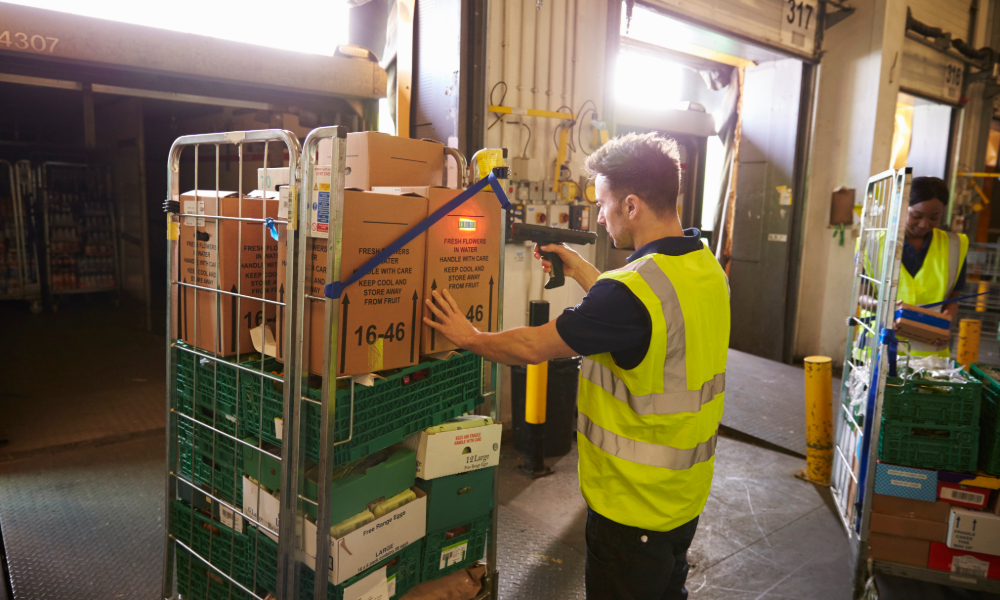
13
Jan
The Ultimate Guide to Warehouse Roll Cages: Types, Benefits, and Best Practices.
It’s the new year, and with 2025, understanding how to best optimise warehouse operations will be key for anyone involved in warehousing industries. This is where roll cages come in! Warehouse roll cages are essential tools in modern logistics, helping businesses store, transport, and organise goods efficiently. Whether it’s managing a small retail store or a large warehouse operation, understanding the different types of roll cages and how to use them effectively can significantly improve workflow and safety standards.
What are Roll Cages?
Roll cages are essentially mobile storage units, typically made from steel or aluminium. They consist of a framework with mesh or wire sides, a base, and four wheels, allowing for the easy transportation of goods within a warehouse. Roll cages are a versatile solution for storing, moving, and organising products, particularly in environments where flexibility, mobility, and space optimisation are priorities. Roll cages can be used in a wide range of industries, from retail and manufacturing to logistics and distribution centres. Their mobility makes them particularly suitable for handling goods over long distances or through tight aisles.
Types of Warehouse Roll Cages.
There are several types of warehouse roll cages available to suit different business needs. Let’s take a look at the most common types:
Standard Roll Cages.
Standard roll cages are the most common type used in warehouses. They typically feature a simple rectangular frame with mesh sides and a solid base. These cages are usually lightweight but sturdy enough to carry a moderate weight load. They are perfect for general-purpose use, such as storing or transporting goods within a warehouse or between locations.
Heavy-Duty Roll Cages.
Designed for more demanding environments, heavy-duty roll cages are built to withstand the rigors of handling larger, heavier loads. They typically have reinforced frames and a higher weight capacity. For warehouses handling bulky items, such as automotive parts or large electronics, heavy-duty roll cages can help to move them safely and efficiently.
Collapsible Roll Cages.
Collapsible roll cages are designed for maximum space efficiency. They can be folded down when not in use, making them ideal for operations that require periodic use but need to minimise storage space. This design is perfect for businesses with fluctuating inventory or those looking to optimise their warehouse footprint.
Specialist Roll Cages.
These include roll cages designed for specific purposes, such as temperature-controlled storage (e.g., food and pharmaceuticals) or those with additional security features for high-value items. Specialist roll cages often have custom features like locks, insulated walls, or specialised shelving.
Benefits of Warehouse Roll Cages.
Increased Efficiency and Space Optimisation.
Roll cages are designed for quick loading and unloading, reducing the time it takes to transport products. This speed is especially important in busy warehouses where time is of the essence. Further, with the ability to stack or collapse, roll cages allow warehouses to make the most of their available space. Whether it’s organising the inventory or transporting goods, roll cages help to maximise floor space without sacrificing convenience.
Improved Workplace Safety and Mobility.
By providing a structured and secure way to move goods, roll cages help reduce the risk of accidents and injuries. They minimise the need for manual lifting, which is a key factor in reducing worker strain and fatigue, and their wheels allow for easy manoeuvrability around tight aisles and crowded warehouse environments. This makes it easy to move heavy loads with minimal effort, ensuring smoother workflows.
Durability and Strength.
Most roll cages are made from durable steel or aluminium, offering long-lasting performance even in tough warehouse conditions. Whether exposed to wear and tear or heavy loads, roll cages are built to last.
Best Practices for Using Warehouse Roll Cages.
Roll cages are a great investment, but they’re only a worthwhile investment if they’re maintained. To extend the lifespan of roll cages, it will be important to perform routine inspections and maintenance. Signs of wear, such as loose wheels, rust, or damaged frames, need to be noticed and addressed immediately. This regular maintenance ensures that roll cages remain safe and efficient.
In addition, each roll cage comes with a specified weight capacity, and it’s essential to adhere to these limits to avoid accidents or damage. Overloading a roll cage can cause instability, making it more difficult to manoeuvre and potentially leading to product damage. Goods need to be evenly distributed when loading into a roll cage to prevent tipping. Heavier items should be placed at the bottom, while lighter items can be stacked on top.
Summing Up.
Warehouse roll cages are indispensable tools for improving efficiency, safety, and organisation within a warehouse. By understanding the different types of roll cages available and adopting best practices for their use, you can streamline your operations, reduce costs, and maintain a safer working environment.
Contact Reco Handling today to see how we can help to revolutionise your storage and efficiency!
Unit 1a & 1b Hammond Avenue,
Whitehill Industrial Estate,
Stockport,
SK4 1PQ
0161 429 7536
sales@reco-group.com

